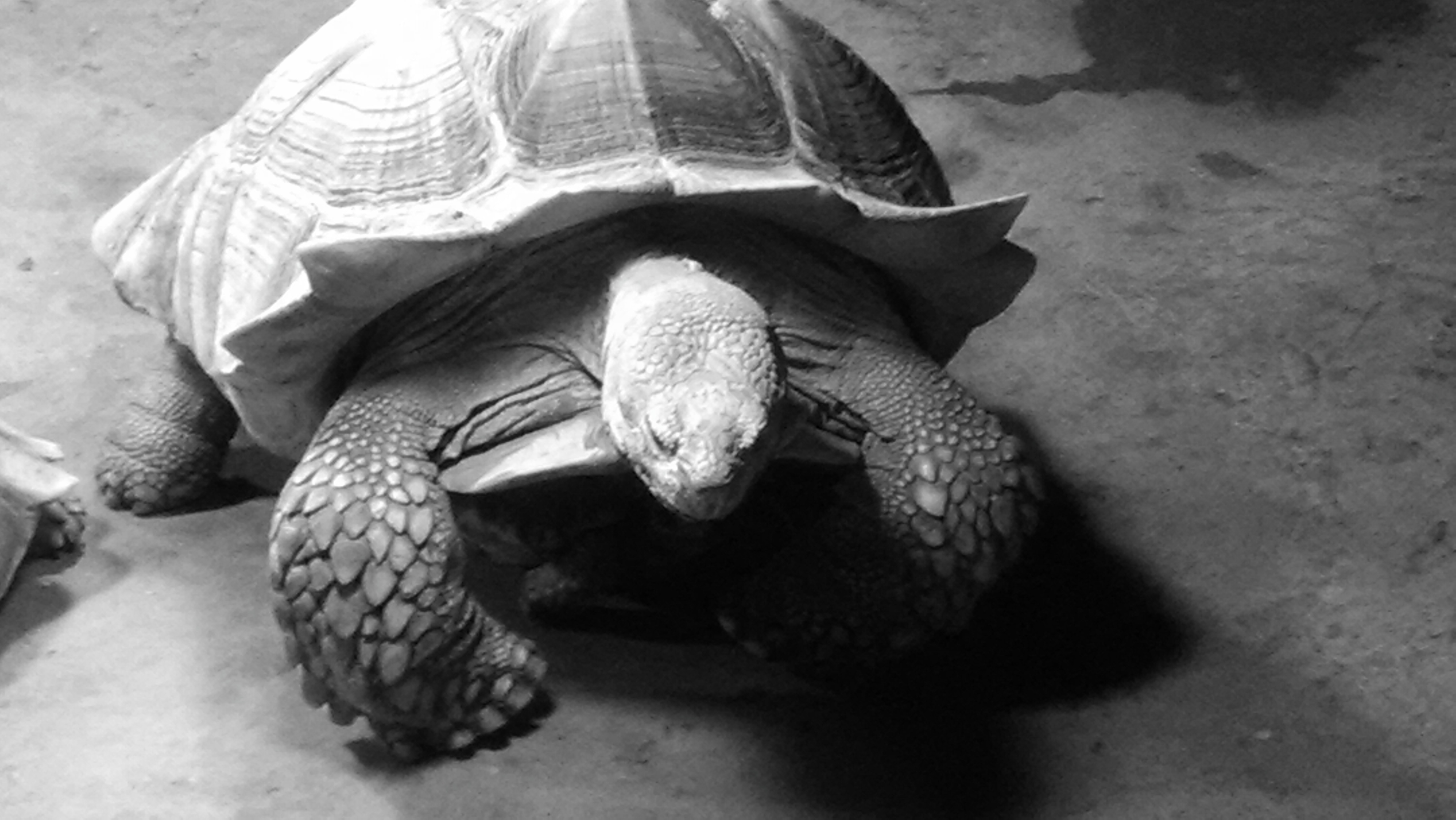

Photo Credit / Briana Magistro
By Briana Magistro
SC Staff Writer
Slowly trudging into this week’s “Animal of the Issue” is the tortoise.
Tortoises are very similar to turtles in that they are protected by a thick shell, are cold-blooded, and have a relatively long life-span.
Tortoises differ from turtles in that they are strictly land animals. Most turtles tend to be aquatic or semi-aquatic, meaning they spend most of their lives swimming. Generally, tortoises are also larger than turtles.
Every child knows that tortoises are very slow, and this is true. Due to the mass and size of their shells, tortoises move very slowly. In fact, no tortoise has been recorded moving faster than five miles per hour.
These creatures tend to be herbivores, sticking to fruits, vegetables, and grasses. Some species also dine on insects and other invertebrates: if they can catch them. The diet of the tortoise is primarily based on what is available.
Tortoises live all over the world, but mostly in warmer climates.
The African Tortoise sports a light green/brown scale color. They also have spiked shells, rather than smooth shells, which are more common.
Scale color, shell texture, and size vary greatly among the many species of tortoise.
Similar to aging a tree with the rings in its trunk, tortoise shells have circular markings that result from a shed cycle.
A reptile sheds its scales and replaces them with new ones as it grows. Each time it sheds, a new ring forms on the shell. A tortoise’s age can be determined by the number of circles on its shell.
Female turtles lay up to 30 eggs at a time in a dugout ditch. They then cover the ditch with dirt and other nearby materials to protect the clutch.
The eggs are flexible because otherwise the female tortoise’s shell would inhibit the passing of the eggs. The eggs harden during the incubation period. Due to the size of the eggs, female tortoises tend to be larger than males.
Reptiles have a very strict heating requirement. Some species require a constant source of heat up to 95 degrees !
Turtles and tortoises also have specific lighting requirements. For their shells to grow properly, terrapins need UVA and UVB lighting, which can only be acquired through sunlight or artificial bulbs.
Recently, the number of pet owners who abandon tortoises has become a major problem, and so some animal shelters have begun accepting them.
One such animal shelter is Noah’s Lost Ark, which is located in Ohio. This shelter has donated tortoises to the Greater Cleveland Aquarium.
The aquarium curator at the tortoise exhibit of the Greater Cleveland Aquarium testified that some owners do not take their unwanted pet to the shelter.
Rather, they allow their pet to escape from their yard and wander into the neighborhood.
This has resulted in some tortoises becoming invasive species, which negatively impacts an environment’s native species.
Tortoises can make great pets, but please keep in mind that some species grow very large and have specific requirements before purchasing one.
Email Briana at:
bmagistro@live.esu.edu

